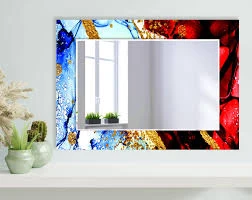

Understanding Green Tempered Glass Properties and Applications
Green tempered glass, a type of safety glass, is widely appreciated for its unique combination of strength, aesthetics, and energy efficiency. The tempering process enhances the toughness of the glass, allowing it to withstand higher levels of stress and temperature fluctuations compared to standard glass. This article explores the key properties, benefits, and applications of green tempered glass, showcasing its versatility and importance in modern architecture and design.
Properties of Green Tempered Glass
The distinct green hue of this tempered glass comes from the iron oxide present in the raw materials used during its production. This slight tint not only adds an appealing visual element but also helps in reducing glare and enhancing privacy. The tempering process involves heating the glass to approximately 600 degrees Celsius and then rapidly cooling it. This thermal treatment alters the internal structure, creating compressive stresses that significantly increase the glass's resistance to impact and thermal stress.
One of the standout features of green tempered glass is its safety profile. When shattered, it breaks into small, blunt pieces, minimizing the risk of injury—an important consideration in both commercial and residential settings. Moreover, it offers excellent thermal insulation properties, which contribute to energy efficiency in buildings by reducing heat loss in winter and minimizing heat gain in summer.
Benefits of Green Tempered Glass
The benefits of green tempered glass are manifold. First and foremost, its durability makes it a preferred choice for various applications, including windows, facades, and balustrades. It can also bear significant loads, making it suitable for structurally demanding installations. Additionally, its resistance to various environmental factors, such as UV rays and moisture, ensures longevity and reduces the need for frequent replacements.

Another advantage is its aesthetic appeal. The subtle green tint complements a variety of design motifs, from contemporary to traditional. Architects and designers often choose green tempered glass for both functional and stylistic reasons, as it harmonizes well with different materials such as wood, metal, and stone. Furthermore, the glass can be treated with various coatings to enhance its reflective properties, further boosting its visual attractiveness while improving energy efficiency.
Applications in Architecture and Design
Green tempered glass is commonly used in a myriad of architectural applications. It finds extensive use in building facades, partition walls, skylights, and canopies. Its ability to reduce solar heat gain while allowing natural light to filter through makes it an ideal choice for energy-efficient buildings. Additionally, in the realm of interior design, it is utilized for shower enclosures, glass doors, and tabletops, adding a touch of elegance and modernity to any space.
Its structural integrity and aesthetic qualities also make it suitable for safety railings and balcony enclosures in high-rise buildings and public spaces. The glass not only ensures safety but also allows for unobstructed views, allowing natural surroundings to blend seamlessly with modern architecture.
Conclusion
In summary, green tempered glass is more than just a functional material; it embodies elegance, safety, and sustainability. Its properties make it an invaluable asset in construction and design, catering to the growing demand for energy-efficient and visually appealing structures. As the world continues to embrace sustainability and innovative design, green tempered glass will undoubtedly play a pivotal role in shaping the environments we inhabit.